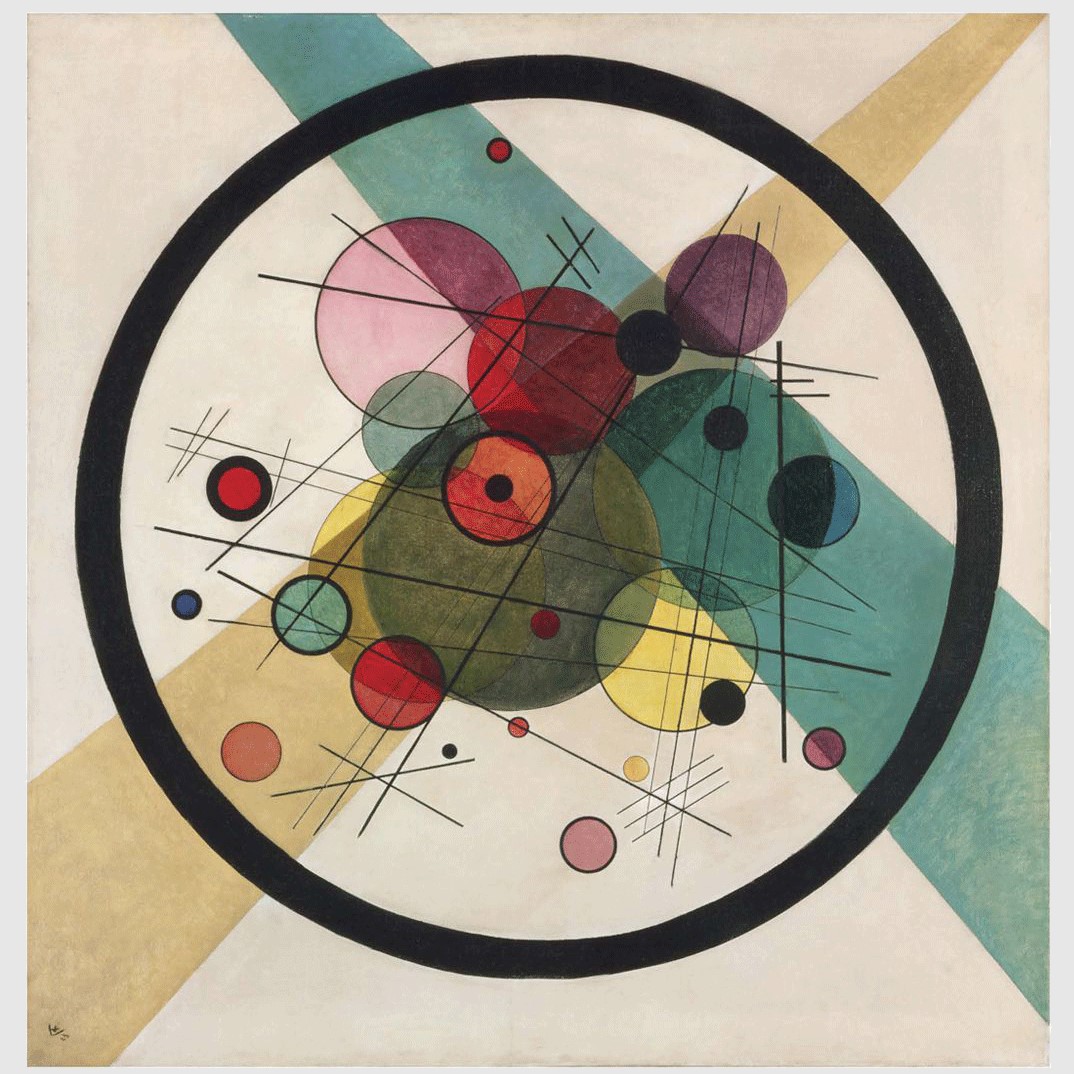A recent conversation I had with an abstract artist who also considers themselves a “Christian artist,” has given me the opportunity to give some thought to the role of abstract art in the Christian context.
Can abstract art be Christian? Of course it can; if it is created by a Christian well grounded in their faith. But a more accurate answer would be, “it depends.” It depends mostly on the disposition of the artist.
The word “abstract” refers to a summary of a large complex idea. Frequently a paper or thesis of some kind will employ an abstract to give the reader a summation or general idea of the contents of the paper. When the art world latched on to the term, it emphasized the “general idea” part and overlooked the “of the contents” part. So abstract art came to be thought of as art that expresses “ideas and emotions by using elements such as colors and lines without attempting to create a realistic picture.” (Merriam Webster Dictionary)

But the earliest founders of the abstract movement would have rejected this modern interpretation. Constantin Brâncuși (1826-1957), considered the father of abstract sculpture, even rejected the word “abstract.”
“There are idiots who define my work as abstract; yet what they call abstract is what is most realistic. What is real is not the appearance, but the idea, the essence of things.” -Constantin Brâncuși
The founders of what has become known as the Abstract Movement, were motivated and inspired by their spirituality. They sought to explore the nature of the human soul and arrive at deeper spiritual insights through their art.

Piet Mondrian (1872-1944), was influenced by the Theosophical Movement. Theosophy, literally, God’s wisdom, sought direct knowledge of the mysteries of being and the nature of divinity. Much of Mondrian’s life work was in search of that spiritual knowledge.
Perhaps most at odds with the modern abstract artist is that these early practitioners did not see their art as a personal inward journey. Rather they sought to bring humanity to a more enlightened state by portraying in their art the essence or being of a thing.
Wassily Kandinsky (1866-1944), another pioneer of the abstract Movement, in his treatise “On the Spiritual Element of Art and the Responsibility of the Artist” was very clear as to the role of art.
“Art is not vague production, transitory and isolated, but a power which must be directed to the improvement and refinement of the human soul.” – Wassily Kandinsky, Concerning the Spiritual in Art

The very foundation of abstract art is grounded in spirituality and a desire to enlighten the hearts and souls of humanity by searching for God. This has been the purpose of almost all art for the majority of human history. When art loses its way, when it no longer serves humanity and rejects its role of finding Beauty, Truth, and Goodness in the world, then we arrive at our present state of affairs. Art that all too often serves only the ego of the artist. Kandinsky warned us about this as well.
“If art refrains from doing this work, a chasm remains unbridged, for no other power can take the place of art in this activity. And at times when the human soul is gaining greater strength, art will also grow in power, for the two are inextricably connected and complementary one to the other. Conversely, at those times when the soul tends to be choked by material disbelief, art becomes purposeless and talk is heard that art exists for art’s sake alone…” -Wassily Kandinsky, Concerning the Spiritual in Art
Can abstract art be Christian art? Of course it can, if the artist is motivated by creating new revelations of the divine for the good of the community. We may argue about how well abstract art achieves this goal, and we may debate the appropriateness of abstract art in our places of worship, but if the artist is properly formed in the Christian faith their work is most certainly Christian.
These are my initial thoughts on “Abstract Christian Art,” and I do not pretend to have arrived at a definitive conclusion. Feel free to offer your own comments and observations.
I will give the last word to Mr. Kandinsky,
“It is very important for the artist to gauge his position aright, to realize that he has a duty to his art and to himself, that he is not king of the castle but rather a servant of a nobler purpose. He must search deeply into his own soul, develop and tend it, so that his art has something to clothe, and does not remain a glove without a hand. The artist must have something to say, for mastery over form is not his goal but rather the adapting of form to its inner meaning.” – Wassily Kandinsky, Concerning the Spiritual in Art
“The artist is not born to a life of pleasure. He must not live idle; he has a hard work to perform, and one which often proves a cross to be borne. He must realize that his every deed, feeling, and thought are raw but sure material from which his work is to arise, that he is free in art but not in life.” – Wassily Kandinsky, Concerning the Spiritual in Art
